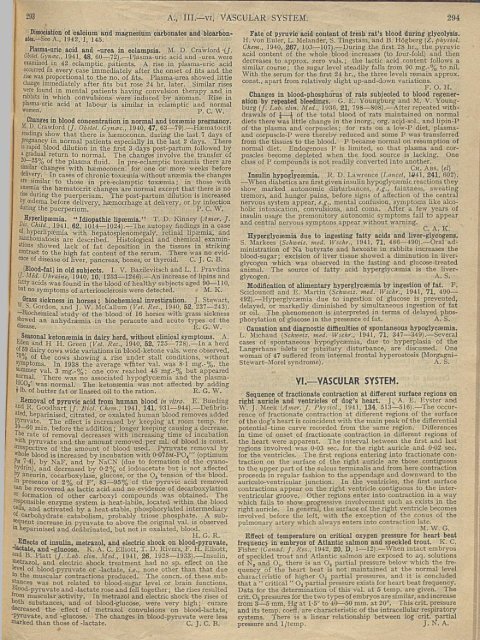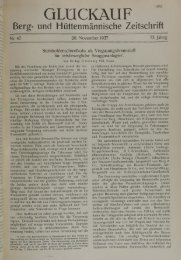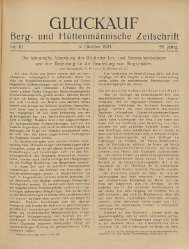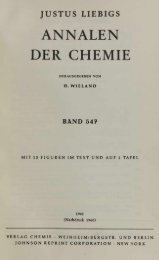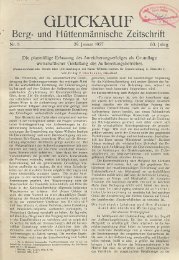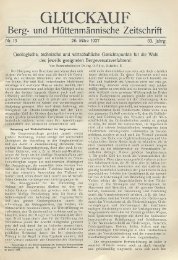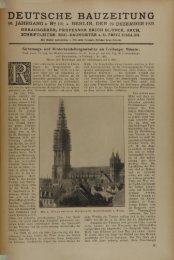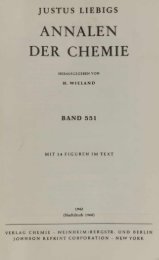291 A ., III.— v , B LO O D A N D LYM PH . 292Abdominal lymphadenoma. A. J . Rhodes and A. Grunberg(Edinb■Med. J ., 1942. [iv], 49, 20— 33).— Description of a case w ithtransposition o£ the viscera and nine' accessory spleens. H . S.Estimation of quantitative and qualitative platelet factors. H. N.Sanford and E. I. Leslie (J. J.ab. clih. Med., 1041, 27, 255—250).—1 c.c. of blood is w ithdraw n from a vein into an iced, oiled syringeand introduced into a paraffined tube im bedded in ice. T he tubesare then packed in ice in a large centrifuge cup and centrifuged for1— 1£ min. a t 5000 r.p.m . A few grains of heparin are placed ona chilled w atch crystal resting in ice. A sam ple from th e centre ofth e centrifuged plasm a is drawn in to a capillary tube, severaldrops are m ixed w ith th e heparin, and a drop is placed in a chilledcounting cham ber, covered w ith a chilled cover glass, and placedin a refrigerator for 15 m in. to allow for settlin g ; th e platelets areth en counted. These plasm a platelet counts are corr. for wholeblood from th e h e m ato crit reading (assum ing all the platelets tobe in th e plasm a). T he rem ainder of th e plasm a left in th e capillarytube is used to estim ate coagulation tim e by breaking off pieces ofth e tube u n til a thread of plasm a forms. As soon as th e capillarytube of plasm a is w ithdraw n from the origirfal paraffined tubecontaining th e blood sam ple, th e latter is again placed in ice andcentrifuged for 15 m in. A sam ple of th e platelet-free centrifugedplasm a is taken into a capillary p ipette and the coagulation tim edeterm ined as before. N orm al adults show a plasm a platelet count of100,000— 400,000 per cu. mm. Coagulation tim e of norm al plasma is4— 8 m in. and of platelet-free plasm a 6— 10 m in. Following tran sfusion in hem ophilia norm al plasm a coagulation tim e drops tohigh norm al vals. but the tisae for platelet-free plasm a rem ainslong, even during hem orrhage-free periods. C. J . C. B.Effect of large doses of cytotoxic antireticular serum on cultures ofhuman tissues of mesenchymal origin. A. D. Tim ofeevski and S. B.Bcncvolenskaja (J. M id . Ukraine, 1940, 10, 1115— 1126).— Passagecultures of m esenchyme (lymph nodes, inflamed connective tissue)and sarcom a were divided in to 2 equal p a rts; one was im plantedin a m edium of cytotoxic serum (2-5— 2 0 %), th e second in norm alhorse serum . 2-5% of cytotoxic serum in th e n u trient m edium doesnot inhib it grow th of m esenchym e; 5% has a retarding effect onproliferation of cells. L ym phocytes of lym ph nodes are especiallysensitive, undergoing degeneration in 2-5%. M. K.Curative effect of antireticular cytotoxic serum. A. A. Bogomoletz(J. M id . Ukraine, 1940, 10. 737— 780).— A lecture. M. K.Genetic effects on serum-proteins. R. W . Cumley, M. R . Irw in,and L. J. Cole (Proc. Nat. Acad. Set'., 1941, 27, 565—570).— Theantigens in th e serum of Pearlneck (Slreptopelia chinensis), sp. forth a t species as com pared w ith Senegal (5. senegalensis), segregate inback-cross individuals according to genetic expectation. T hespecies-sp. qualities of the serum -proteins are determ ined by genea c tio n ; probably th e to tal protein complex of th e serum is alsodeterm ined by genes. T he genes which in Pearlneck produce theserum are n o t th e sam e as those th a t produce th e cellular antigens,and are probably n o t on th e sam e chromosomes. The results confirmthose obtained w ith th e sera and cells of back-cross hybrids ofo th er com binations of species of doves and pigeons. J. N. A.Colloidal osmotic pressure of blood in normal and pathologicalconditions. XVII. Fever. K. Takeda. XVIII. Changes inplasma-proteins and colloid osmotic pressure following cutting offof portal circulation or extirpation of liver. M. H orikaw a (7 6hokuJ . Exp. M ed., 1935. 27, 325— 334 ; 1930, 28, 90— 105).— X V II.Blood-protein and colloidal osm otic pressure are usually decreasedb y fever. C ertain fevers (e.g., dysentery-vaccine fever) decreaseth e form er b u t increase th e . latter, th e album in : globulin ratiobeing increased.X V III. H em oglobin (average 61%) and plasm a-protein (average4-7%) in the blood of Bufo vulgaris japonica are less in males andw inter toads th an in females and sum m er toads, b u t the colloidosmotic pressure (average 133 mm. water) was greater in each case.All vals. were decreased by cutting off th e portal circulation andby extirpation of the liver.Ch. Abs. (el)Relationship of hypoalbuminacmia to cedema of malaria. I.Kopp and H . C. Solomon (.-; nter. J . med. Sci., 1941, 202. 861— 868).— In m alaria, plasm a-album in vals. fall progressively to crit. levelsa t which cedema m ay occur. Plasm a-globulin, as a rule, shows aprogressive increase after th e first few paroxysm s, reaching itshighest level a t a tim e when album in vals, are lowest. Fibrinogenvals. fluctuate and in 3 of 7 patients were reduced below pre-febrilelevels. T he term ination of m alarial fever is followed by an imm ediate continued rise of -album in and a delayed b u t progressivedrop of -globulin so th a t norm al vals. are obtained in 10— 24days. Fibrinogen vals. return to norm al w ithin 1 week. Thealbum in-globulin ratio falls rapidly during m alaria, reaching levelsof 1 or below after 10 to 12 parosysm s have occurred. The dependentor generalised oedema occurring during th e course of therapeuticm alaria in p atients free from renal dam age or cardiac failure is theresult of a reduced osm ctic pressure caused by a m arked fall of thealbum in fraction to levels of 3 g.-% or less. ■ C. J. C. B.Action of vitamin-AT on bleeding time in thrombocytopenia. M.Dressier (Schweiz, med. Wschr., 1941, 71, 483—488).—1 g. of 2-m ethyl-I : 4-disuccinylnaphthaquinol is equiv. to 15 million Damunits. Vitamin-TC prom otes th e form ation of prothrombin anddiminishes th e bleeding tim e even in cases w ith pronounced thrombocytopenia.A. S.Experimental hypoprothrombinsemia. J. E . Rhoads, R. Warren,and L. M. Panzer (Amer. J . med. Sci., 1941, 202, 847—8G1).—10m eans of producing hypoprothrom binem ia in anim als are reviewedfrom the literature. CHC1, anaesthesia and CC14 poisoning in dogslead to a rapid drop in plasm a-prothrom bin from which recoveryoccurs regardless of w hether or not th e bile reaches the duodenum.T otal hepatectom y in th e dog and cat leads to a prom pt decline inplasm a-prothrom bin. A rapid decline in prothrom bin may occurin hum an plasm a stored in vitro, reaching 20% of normal in 24 hr.C. J. C. B.Treatment of hoemorrhagic disease of newborn [use of vitamin-A].A. I. S. M acphcrson (Brit. M e d .J ., 1941, II, 4 3 3—436).—Studies in10 cases of hem orrhagic disease of th e newborn showed that intramuscular whole blood injections were ineffective, th a t blood transfusioncaused im provem ent w ith tem porary rise of blood-prothrombin level, and th a t sustained im provem ent was only attainedw ith injections of vitam in * # (2-m ethyl-1 ; 4-naphthaquinone) whichraised prothrom bin levels to norm al. C. A. K.Mechanism of enhanced diabetes with inflammation. V. Menkin(Amer. J . Physiol., 1941, 134, 517— 541).—An acute inflammatoryreaction accom panied by extensive exudation induced by intrapleuralinjection of 1*6 c.c. of tu rp en tin e in dogs does not alterblood-sugar. In dogs m ade diabetic by pancreatectom y acuteinflam m ation induces a rapid m arked rise in blood-sugar, and in-non-protein-, -urea- and -amino-acid-N. T he extent of proteolysisa t th e site of acute inflam m ation in diabetic dogs is more markedth a n in non-diabetic. T here is a lower concn. of total proteinsand a corresponding highej concn. of urea, non-protein- and aminoacid-Nth an in exudative m aterial of non-diabetic animals. Indiabetic exudates th e polym orphs show m ore signs of injury thanin norm al exudate. E nhanced protein catabolism in the inflamedarea of th e diabetic anim al is correlated w ith a m arked rise in bothexudate-sugar and -lactic acid. Insulin reduces not only the levelof sugar and lactic acid in such diabetic exudates, but also thedegree of local proteolysis.M. WOrigin, fate, and significance of serum enzymes. A. W . OelgoeU,P. A. Oelgoctz, and J. W ittekind (Amer. J . digest. Dis. Nutr., 1930.3, 159— 161).— Norm al serum alw ays contains amylase, lipase, andprotease in const, concn. T he serum enzym es are probably pa3'creatic enzym es. Pancreatic enzym es are absorbed in the activesta te when given per os, b u t th e norm al concn. of serum enzymescannot be increased. W hen given in excessive dosage, pancreaticextract seems to be stored in th e liver and spleen, whence it uliberated in such concn. as to m aintain th e norm al serum level.C h . A b s. (‘0Rate of removal ol amines from blood. D. R ichter, M. H.and D. Hill (Biochem .J., 1941, 35, 1225— 1230).—A s e n s i t i v e methodfor determ ining am ines in blood is described. T he amines areex tracted from whole blood by light petroleum in presence olK,CO, and are then tak en up in .\-H ,S 0 4 satu rated with NaBrwhich separates them from phospholipins. The am ines are extractedw ith light petroleum and converted into picrates. Thesein CHC1, give a strong yellow colour which is determ ined by meansof a photo-electric absorptiom eter. The m ethod can detect 1 P-P “jof /3-phenylethylaraine or »soamylamine; when tested by this methodnorm al ox, guinea-pig, and hum an blood contain less than thisam ount of am ines. T he ra te of detoxication of jS-phenyletliylaniineadm inistered intravenously in m an determ ined from th e tim e take0b y th e blood pressure to retu rn to norm al is approx. 26 mg. per kgbody-wt. per hr., an d th e ra te of detoxication of « io a m y la n u n edeterm ined from th e ra te of rem oval from th e blood is 60—-250mg. per kg. body-w t. per hr. J. N. A.Significance of serum-lipase in obstetrics and gyniecology. K*T akeda, K. Tem m a, and K. Kubo (Japan. J . Obstet. Gynec., 1941.24, No. 2, 18— 19).—Lipase in th e serum decreases during the l^ 1m onths of pregnancy; th e decrease continues in th e p u e r p e r iu f f l.T he decrease is greater in cases of eclam psia. T he lipase falls afterlaparotom y and operation for cancer of th e uterus. T he lipas*content of th e serum is related to th e erythrocyte count.P . C. W-Carbon suboxide and proteins. IV. Ultracentrifugal behaviour ofcarbon suboxide-treated horse serum-albumin. J. L. Oncley, W. 1-Ross, and A. H. T racy (J. Biol. Chem., 1941, 141, 797— 802).-CjO, (0-4 mol. per g.-atom of N) is allowed to react w ith the c a r b o hydrate-free. cryst. album in a t p u 7-5 for 1 hr. Ultracentrifugationof th e product shows th e presence of a considerable proportion ofm aterial sedim enting faster th a n th e original protein. The twocom ponents of th is m aterial appear to be products formed by thecoupling of 2 or 3 protein mols., respectively, by m alonyl bridges.
j293 A ., III.— vr, VASCULAR SYSTEM . 294Dissociation of calcium and magnesium carbonates and bicarbonates.—SeeA., 1942, I, 145.Plasma-uric acid and -urea in eclampsia. M. D. Crawford ■{].Obsld.Gynac., 1941, 48, (¡0— 72).— Plasm a-uric acid and -urea wereexamined., in 42 eclam ptic patients. A rise in plasma-uric acidoccurred in every case im m ediately after the onset of fits and therise was proportional to th e no. of fits. Plasma-urea showed littlechange immediately a fte r fits b u t rose 24 hr. later. . Similar riseswere found in m ental p atients having convulsion therapy and inrabbits in which convulsions were induced b y azoman. Rise inplasma-uric acid a t labour is sim ilar in eclamptic and normalwomen. p . c . W..Changes in blood concentration in normal and toxoemic pregnancy.■'I. D. Crawford (/. Obstet. Gyn&c., 1940, 47, 03—79).—-Hamiatocritreadings show th a t there is lucmoconcn. during the last 7 days ofpregnancy in normal p atients especially in the last 2 days. Thereis rapid blood dilution in th e first 3 days post-partum followed bya gradual return to norm al. T he changes involve the transfer of-0—25% of the plasm a fluid. In pre-eclam ptic toxiem ia there aresimilar changes w ith haemoconcn. for one or more weeks beforedelivery. In cases of chronic toxxm ia w ithout anosmia the changesare similar to those in pre-eclam ptic toxaemia; in those withanimia the h em ato crit changes are norm al except th a t there is nonse during the puerperinm . The post-partum dilution is increasedty ttdema before delivery, haemorrhage a t deliver}', or by infectionduring the puerperiuni. P. C. W.Hyperlipaemia. “ Idiopathic lipsemia.” T. D. Kinney (Amer. J .£is. Child., 1941, 62, 1014— 1024).—The autopsy findings in a caseof hyperlipa:mia w ith hepatosplenom egaly, retinal lipsemia, andxanthomatosis arc described. Histological and chemical exam inationsshowed lack of fa t deposition in the tissues in strikingcontrast to th e high fa t content of th e serum. There was no evidenceof disease of liver, pancreas, bones, or thyroid. C. J. C. B.¡Blood-fat] in old subjects. I. V. Bazilcvitsch and L. I. PravdinaU-Mid. Ukraine, 1940, 10, 1253— 1266).—An increase of lipins andjatty acids was found in th e blood of healthy subjects aged 90— 110,but no sym ptoms of arteriosclerosis were detected. M. K.Grass sickness in horses; biochemical investigation. T- Stew art,"•S. Gordon, and J. W. McCallum (Vet. Rec., 1940, 52, 237—243).I ■--Biochemical stu d y of the blood of 16 horses w ith grass sicknesswowed an anhydra:m ia in th e pcracute and acute types of thedisease. E. G. W.Seasonal ketonesmia in dairy herd, without clinical symptoms. A.Men and H H . Green (Vet. Rec., 1940, 52. 725— 728).—In a herd"no? » cows wide variations in blood-ketone vals. were observed,'®/4 of the cows showing a rise under stall conditions, w ithoutsymptoms. In 1938 th e average w in ter val. was 8-1 m g.-% , thesummer val. 3 m g.-% ; one cow reached 45 m g.-% b u t appearednormal. There was no associated hypoglycem ia and th e plasma-HCOj' was norm al. The ketonnemia was not affected by adding! lb. of b u tter fat or linseed oil to th e ration. E. G. W .Removal of pyruvic acid from human blood in vitro. E. BuedingK. G oodhart (J. Biol. Chem., 1941, 141, 931— 944).—Defibrinated,heparinised, citrated, or oxalated hum an blood removes addedPyruvate. The effect is increased by keeping a t room tem p, for30—60 min. before the ad d itio n ; longer keeping causing a decrease,fne rate of rem oval decreases w ith increasing tim e of incubation" ’th pyruvate and th e am ount removed per ml. of blood is const,irrespective of th e am ount of blood used. P yruvate removal bywhole blood is increased by incubation w ith 0-075m-P04" ' (optimumfa 7-4), b y N aF, and by NaCN (due to form ation of th e cyano-“ydrin), and decreased by 0 -2 % of iodoacetate but is not affectedaneurin, cocarboxylase, glucose, or th e O, tension of the blood,presence of 2% of F ', 83—95% of th e pyruvic acid removedean be recovered as lactic acid and no evidence of decarboxylationor formation of other carboxyl compounds was obtained. The•''-■sponsible enzym e system is heat-labile, located w ithin th e bloodceUs, and activated by a heat-stable, phosphorylated interm ediary°f carbohydrate catabolism , probably triose phosphate. A subsequentincrease in p y ruvate to above th e original val. is observed10 heparinised and defibrinated, b u t not in oxalated, blood.H. G. R.Effects of insulin, metrazol, and electric shock on blood-pyruvate,-lactate, and -glucose. K. A. C. E lliott, T. D. Rivers, F. H . E lliott,« d B. P la tt (J. Lab. clin. Med.. 1941, 26, 1928— 1933).— Insulin,j&etrazol, and electric shock trea tm e n t had no sp. effect on th elevel of blood-pyruvate or -lactate, i.e., none other th an th a t dueto the m uscular contractions produced. The concn. of these substanceswas not related to blood-sugar level or brain functions,clood-pyruvate and -lactate rose and fell to g eth er; th e rises resultedjrom m uscular activity. In m etrazol and electric shock th e rises ofw th substances, and of blood-glucose, were very high; curaredecreased th e efiect of m etrazol convulsions on blood-lactate,'Pyruvate, and -glucose. The changes in blood-pyruvate were lessmarked th an those of -lactate. C. J . C. B.Fate of pyruvic acid content of fresh rat’s blood during glycolysis.H. von Euler, L. Melander, S. Tingstam , and B. Hogberg (Z. physiol.Chem., 1940, 287, 103— 107).— During the first 28 hr., th e pyrruvicacid content of the whole blood increases (to four-fold) and thendecreases to approx. zero vals.; th e lactic acid content follows asim ilar course; the sugar level steadily falls from 90 m g.-% to nil.W ith the serum for the first 24 hr., the three levels rem ain approx.const., a p art from relatively slight up-and-dow n variations.F. O. H .Changes in blood-phosphorus of rats subjected to blood regenerationby repeated bleedings. G. E. Youngburg and M. V. Youngburg(J. Lab. clin. Med., 1930, 21, 798— 808).—After repeated w ithdrawalsof i } of the to tal blood of rats m aintained on norm aldiets there was little change in the inorg., org. acid-sol., and lipin-Pof th e plasma and corpuscles; for rats on a low-P diet, plasm a-and corpuscle-P were thereby rcduced and some P was transferredfrom the tissues to the blood. P became norm al on resum ption ofnormal diet. Endogenous P is lim ited, so th a t plasm a and corpusclesbecome depleted when the food source is lacking. Oneclass of I’ compounds is not readily converted into another.Ch. A b s . (el)Insulin hypoglycsemia. R. D. Lawrence (Lancet, 11)41, 241, 602).—W hen diabetics are first given insulin hypoglycremic reactions th eyshow m arked autonom ic disturbances, e.g., faintness, sw eatingtrem ors, and hunger pains, before signs of affection of th e centralnervous system appear, e.g., m ental confusion, sym ptom s like alcoholicintoxication, convulsions, and coma. A fter a few years ofinsulin usage the prem onitory autonom ic sym ptom s fail to appearand central nervous sym ptons ap p ear w ithout warning.C. A. K.Hyperglycsemia due to ingesting fatty acids and liver-glycogens.S. Markees (Schweiz, med. Wschr., 1941, 71, 486—490).—Oral a d m inistration of N a b u ty rate and hexoate in rabbits increases theblood-sugar; excision of liver tissue showed a dim inution in liverglvcogenwhich was observed in th e fasting and glucose-treatedanim al. The source of fatty* acid hyperglyca:mia is the liverglycogen.A. S.Modification of alimentary hyperglycsemia by ingestion of fat. F.Sciclounoff and E . M artin (Schweiz, med. Wschr., 1941, 71, 490—492).— Hyperglycaimia due to ingestion of glucose is prevented,delayed, or m arkedly dim inished by sim ultaneous ingestion of fator oil. T he phenom enon is interpreted in term s of delayed phosphorylationof glucose in th e presence of fat. A. S.Causation and diagnostic difficulties of spontaneous hypoglycsemia.L. Michaud (Schweiz, med. Wschr., 1941, 71, 347— 349).— Severalcases of spontaneous hypoglycem ia, clue to hyperplasia of th eLangerhans islets or p itu itary disturbance, are discussed. Onewoman of 47 suffered from internal frontal hyperostosis (M orgagni-Stew art-M orel syndrome). A. S.Yl.— VASCULAR SYSTEM.Sequence of fractionate contraction at different surface regions onright auricle and ventricles of dog’s heart. J,. A. E. E yster andW. J. Meek (Amer. J . Physiol., 1941, 134, 513— 516).—The occurrenceof fractionate contraction a t different regions of th e surfaceof th e dog's heart is coincident w ith th e m ain peak of th e differentialp o tential-tim e curve recorded from th e sam e region. Differencesin tim e of onset of fractionate contraction in different regions ofth e h eart were ap p arent. The interval betw een the first and lastregions involved w as 0-03 sec. for th e right auricle and 0-02 sec.for th e ventricles. The first regions entering into fractionate contractionon th e surface of th e right auricle are those contiguousto th e upper p a rt of th e sulcus term inalis and from here contractionproceeds in regular fashion to th e appendage and downward to theauriculo-ventricular junction. In th e vcntricles, th e first surfacecontractions ap p ear on th e rig h t ventricle contiguous to th e in terventriculargroove. O ther regions en ter in to contraction in a waywhich fails to show progressive involvem ent such as exists in th eright auricle. In general, th e surface of th e right ventricle becomesinvolved before the left, w ith the exception of the conus of thepulm onary artery which always enters into contraction late.M. W . G.Effect of temperature on critical oxygen pressure for heart beatfrequency in embryos of Atlantic salmon and speckled trout. K. C.Fisher (Canad. J . Res., 1942, 20, D, 1— 12).— W hen in ta c t em bryosof speckled tro u t and A tlantic salmon are exposed to aq. solutionsof N , and O,, there is an 0 2 partial pressure below which th e frequencyof the h eart b eat is n o t m aintained a t th e norm al levelcharacteristic of higher O, p artial pressures, and it is concludedth a t a “ critical " O , partial pressure exists for h e art b eat frequency.D ata for th e determ ination of this val. a t 5 tem p, are given. Thecrit. 0 3 pressures for th e tw o types of em bryos are sim ilar, and increasefrom 3— 5 mm. H g a t 1-5® to 40— 50 mm. a t 20°. T his crit. pressureand its tem p, coeflf. are characteristic of th e intracellular respiratorysystem s. There is a linear relationship betw een log crit. partialpressure and 1/tem p . J . N. A.
- Page 1 and 2: BRITISH CHEMICAL AND PHYSIOLOGICAL
- Page 3 and 4: 285 A., III.—hi, PHYSICAL ANTHROP
- Page 8 and 9: 295 A ., III.— v i, V A SC U L A
- Page 10 and 11: 299 A., II I.— ix , N E R V O U S
- Page 12 and 13: 3 0 3A., III.—x, SENSE ORGANS,xi,
- Page 14 and 15: 307 A ., III.— x i, D U C TLESS G
- Page 16 and 17: 311 A ., III.— x i i, R E P R O D
- Page 18 and 19: 315A ., III.— x iii, D IG E ST IV
- Page 20 and 21: 319 A ., I I I.— x v , K ID N E Y
- Page 22 and 23: 323 A ., III.— x v n , TUM O UR S
- Page 24 and 25: 327 A ., I I I .— x v m , N U T R
- Page 26 and 27: 331 A ., III.— x ix , M ETABOLISM
- Page 28 and 29: 335 A ., I I I.— x x , PHARM ACOL
- Page 30 and 31: 339 A ., II I.— x x ii, R A D IA
- Page 32: 343 A.. III.—xxv, MICROBIOLOGICAL
- Page 35 and 36: 340 A., H I.— x x v , MICROBIOLOG
- Page 37 and 38: 353 A., II I.— x x v , MICROBIOLO
- Page 39 and 40: 357 A., III.—x x v i, PLANT PHYSI
- Page 41 and 42: Asflis, I., 305, 333.Abramowitz, A.
- Page 43: W a c h h u l d e k , K., 295.Wadsw


